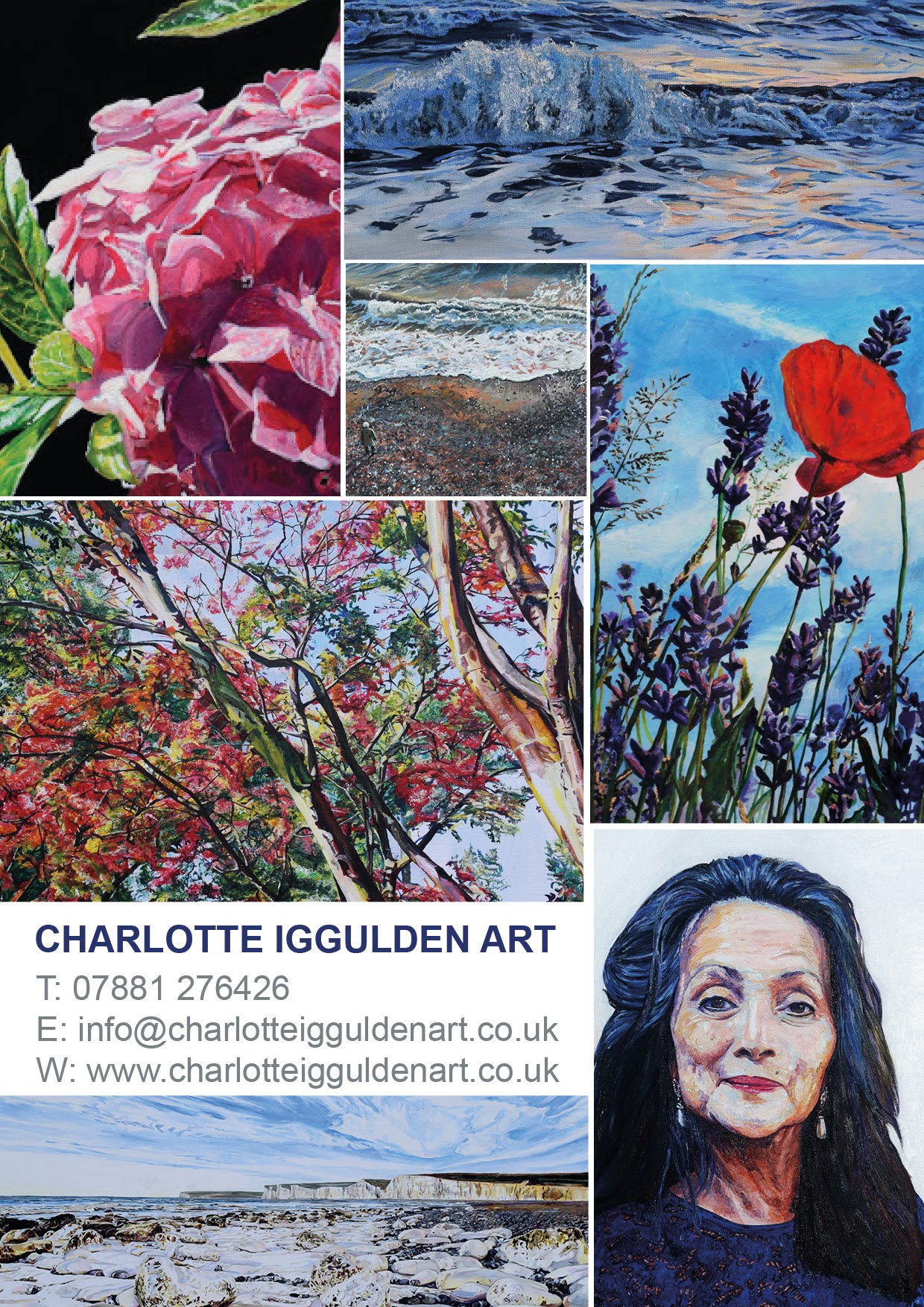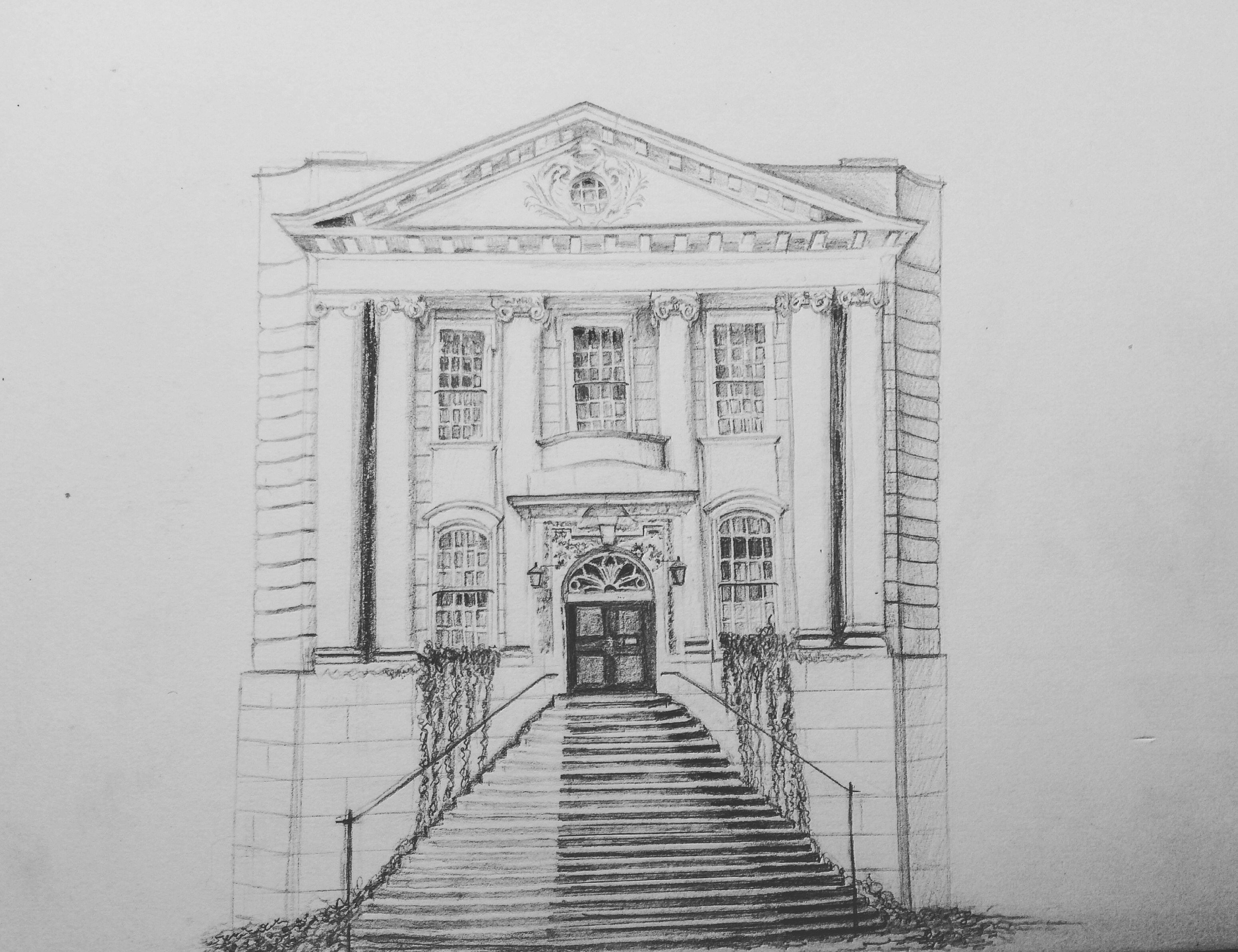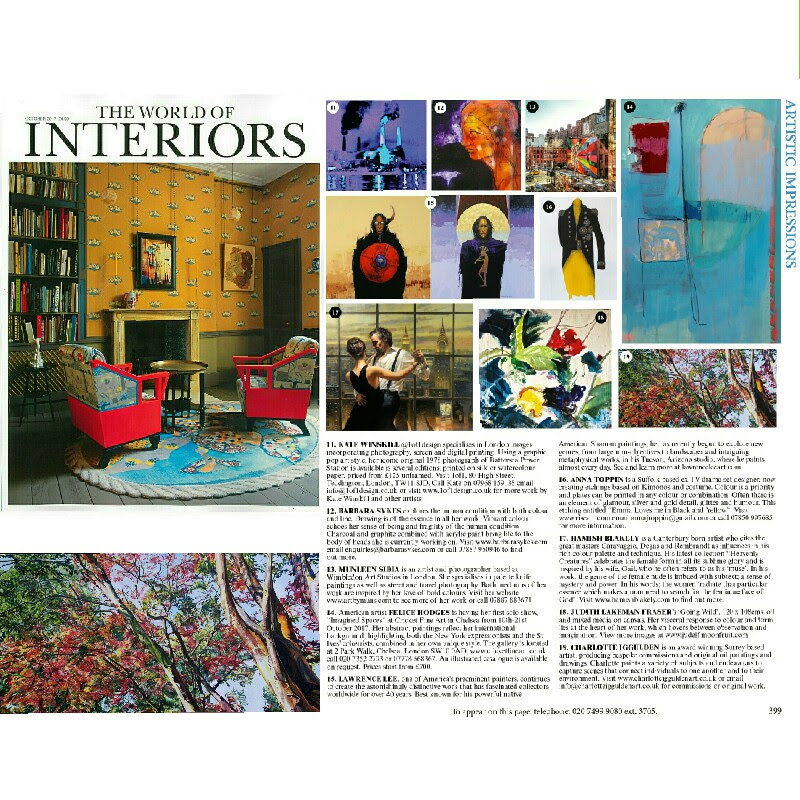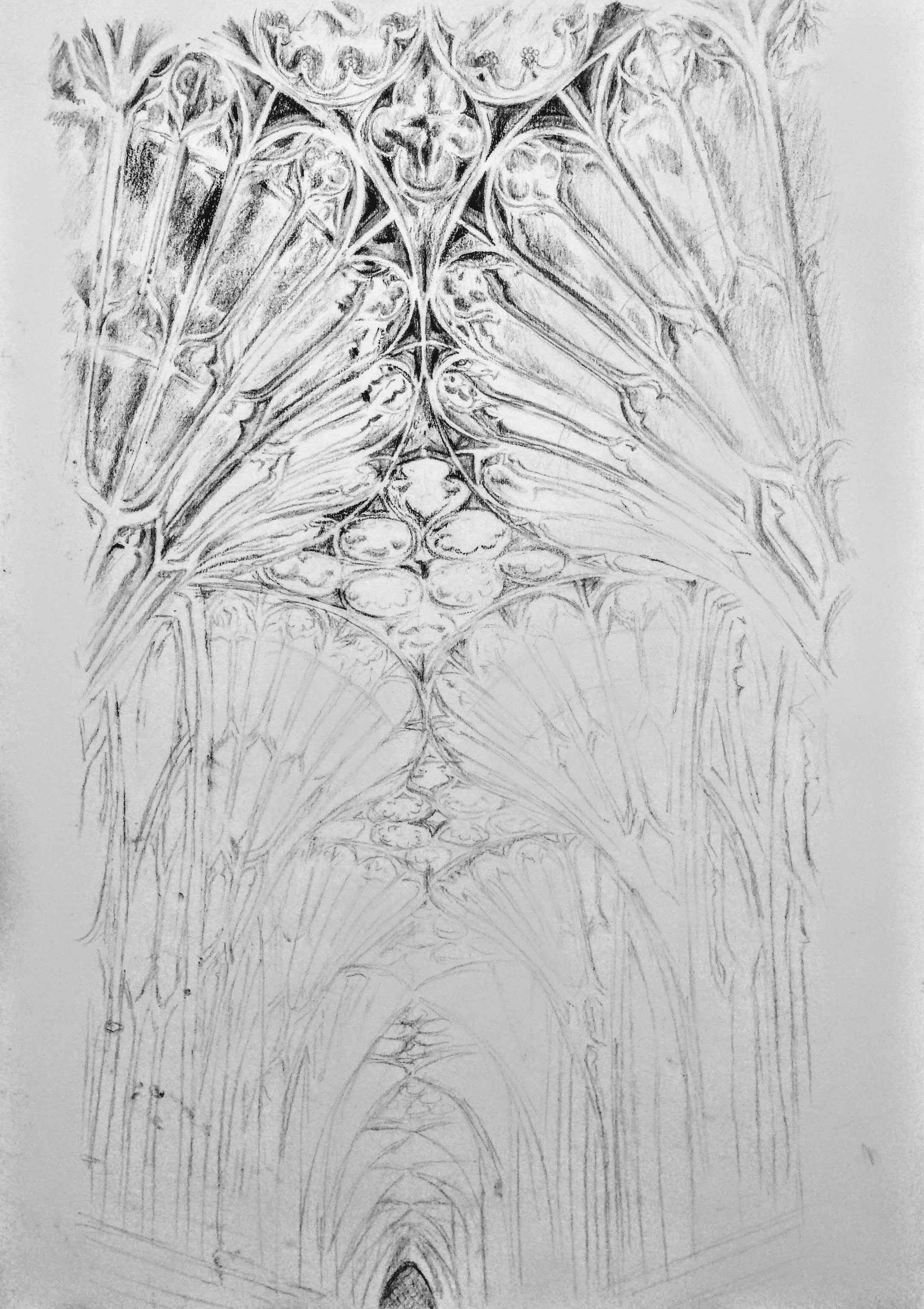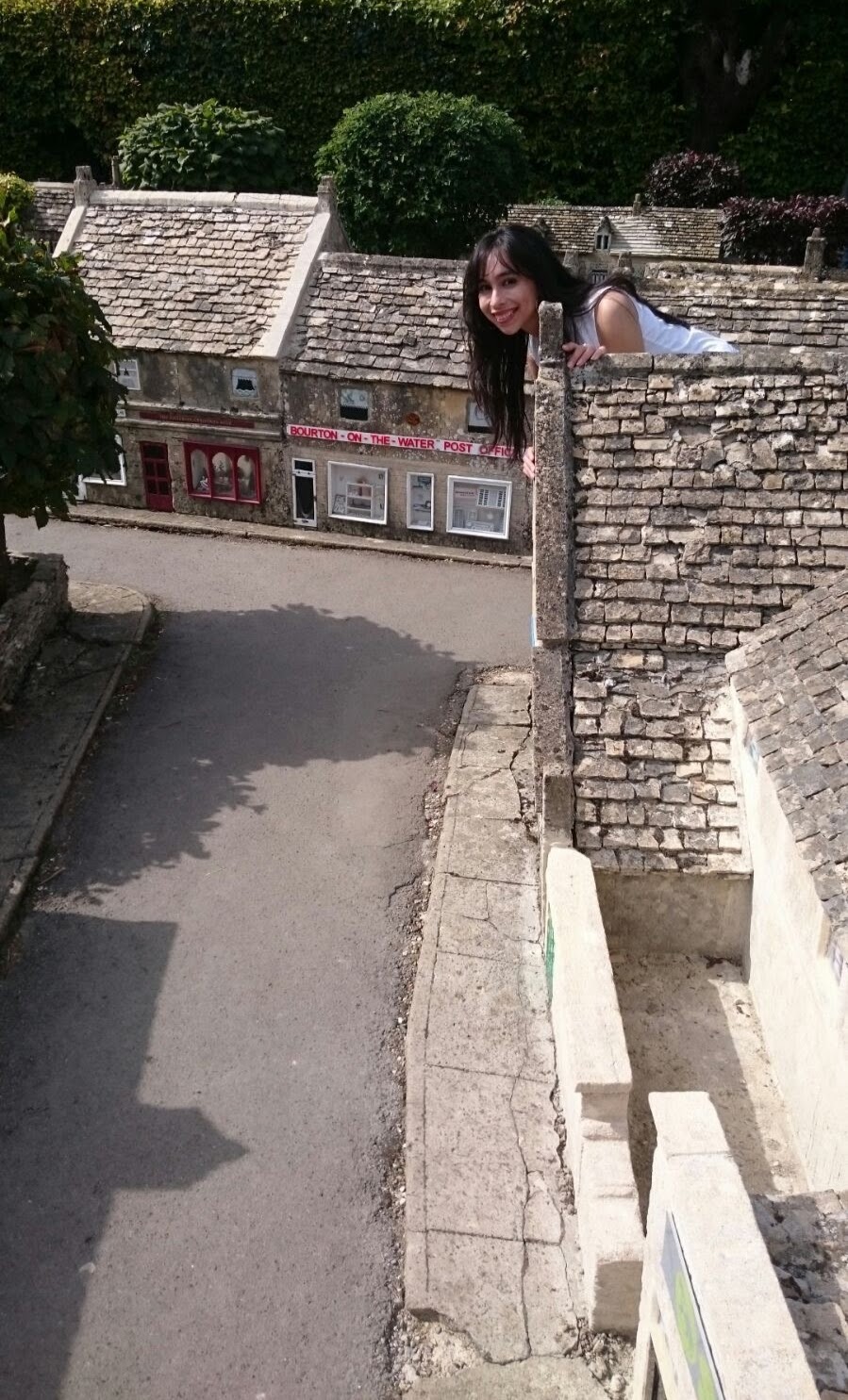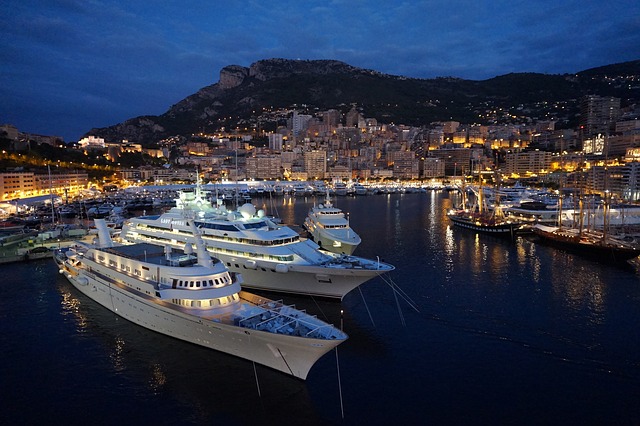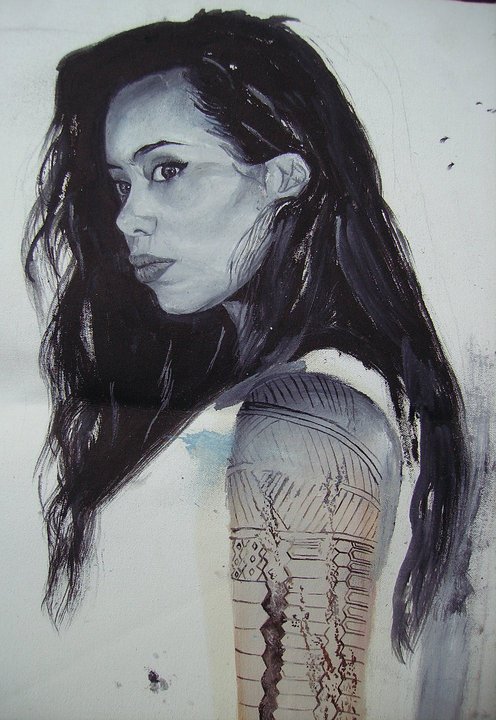“Talent is God given. Be humble. Fame is man-given. Be grateful. Conceit is self-given. Be careful.” John Wooden
Under normal circumstances, I would now be writing a mini report on my first Parallax art fair at Chelsea Town Hall and how much I enjoyed meeting the public and fellow artists. However, whilst at the fair I was confronted with the statement ‘an artist cannot make a living on his/her art’, which I felt compelled to address.
The statement came from a fellow artist (a retired gentleman who was also exhibiting) and I was stunned that he held this opinion, especially as I have been surrounded and encouraged by artists who make a very good living. It is also incredibly easy to find many successful artists simply by doing a google search. I myself sold my first original oil painting at the age of 15 to one of my teachers, and at the time I remember being delighted and surprised that someone liked my art enough to want to buy it. I mentioned this and he seemed surprised that his worldview was not wholly representative.
To be honest, I enjoy the challenge of breaking those perceptions and walls that enclose people’s minds to possibility. When I first sold a painting, I was a very academically minded student, who loved her studies and kept her passion for dance, sport and art in her spare time. I had an almost insatiable desire for knowledge and wanted to pursue a ‘sensible’ career. I had many interests but felt my love for English was the surest way to a ‘stable’ job, either through becoming a cultural journalist or similar, as it would encompass my love for writing, travel, science, nature etc in one. I had also convinced myself (to the disappointment of my art teachers), that if I studied Fine Art at Uni, I would lose my freedom and style. I decided to continue painting ‘on the side’ and instead pursued academic excellence and scholarships, earning myself a place at Royal Holloway, University of London, studying English Literature.
I continued to enjoy regular paid art commissions for clients since that first sale, selling original work and having exhibitions, but I had apparently been indoctrinated somewhere it ‘was not possible’ to paint and make a living. I was guilty of building my own walls and this was exacerbated by the 18th century (perhaps symbolically archaic) phrase ‘I don’t want you to be a starving artist’ sometimes quoted over the years from a few well-meaning friends and relatives.
Thankfully, my ‘art-career’ worldview transformed when I met hypperrealist artist and royal portrait painter, Darren Baker, in early 2015. Some say that life is full of coincidences, random meetings, serendipity or fate. I am in the ‘fate’ camp, or rather ‘divine intervention,’ due to my Christian faith. Everything happens for a reason and so it is always good to be spontaneous. I had discovered Darren’s work online and admired one of his works in particular, an oil painting of a race horse. I signed up to his mailing list (essential to any artist!), and was soon invited to a private view held at his newly opened gallery, on the perhaps symbolically named Charlotte Street, in London’s Fitzrovia. Darren was present at the event and towards the end of the evening I gathered the courage to speak to him about his work.
I quickly realised Darren was far more interested in my own art and asked to see some examples. He really liked my work and, to my utter astonishment and delight, offered to show my paintings alongside his. Realising he was being serious, I agreed and soon began working on my first seascape series, ready for exhibition in September 2015. I had the privilege of being introduced to internationally renowned established artists from that point on; exhibiting alongside Darren Baker, Chinese artist/activist and Royal Academy exhibitor Ai Wei Wei and microartist Graham Short. I have kept in contact with Graham since our group exhibition and am currently working on a portrait of him (soon to be revealed!). I then met Burmese artist Min Wae Aung at a private view in London in 2016 and have kept in contact, with an open invitation to exhibit either solo or in a group.
These artists (who happen to be male, although I have never seen this as a significant factor) played a huge role in encouraging me in my painting. They were already successful and could easily advise others. I was also not intimidated by their success, nor insecure in my own abilities. Since then I have discovered many artists online whom I admire and who enjoy success, painting because they love it and the earnings follow: these include Ran Ortner, Joel Rea and Andrew Tischler. They have become my gauge as to what is possible in this field, so I remain persevering and adamant in my work. The key is to surround yourself with positive, successful (this comes in many forms), secure people, those who will most importantly pull you up, not bring you down. Always be confident in your own work, be ready to learn, and to look at the successes of others as something to celebrate and encourage you, not to make you insecure. My own security lies in my faith and my family and friends, not my ability, material success or worldly validation.
Indeed, I have the absolute honour and privilege of being part of an incredibly supportive and loving family, who have given me amazing life lessons. Due to my parents’ jobs in luxury architecture and interior design, my sister and I were introduced from an early age to very ‘materially’ successful individuals and companies. Our parents taught us to remain humble no matter our success, to identify with those who have ‘material success’ and those who have little, and to stay close to family and friends. I have learnt how to be with people from different social stratospheres and hopefully can help enable conversations between both. I believe that anyone who has the right attitude is worth admiring. There is no point gaining the world, yet losing your soul.
After I left my marketing role three years ago to first take a ‘leap of faith’ into the art industry, I was quickly tempted by a large investment firm asking me to work for them for a very attractive salary (potentially earning up to six figures in just three years). The material rewards and financial ‘security’ were promising. However, on asking them how long I would have to focus on my art, they said I would probably need to forsake it as I wouldn’t realistically have time. The job offer still stands but I have not taken it. I have been converted from an academically minded person to a full believer that I can earn a living from my art, without losing my soul to materialism and commerce or myself becoming a product.
I did not study fine art, but I have heard that at Universities, it is not always encouraged to be ‘commercial’ or in other words, to sell your art. This is detrimental to artists; as Parallax have pointed out, artists have always been capable of earning. Historically, they earned on a commission basis (as I mostly did early on) and followed what the public wanted, which gave them ‘financial’ security.
For those concerned, being a successful artist has never been limited to men. There are many successful living female artists such as Marina Abramovic, Zaria Forman, Bridget Riley and Vija Celmins to name a few. Mary Beale was the first commercially successful female artist – there was a fascinating BBC 4 documentary recently on her ‘lost masterpieces,’ presented by art historian Dr Brendor Grosvenor and social historian Emma Dabiri. Some may argue that Mary’s gender disadvantaged her, being always compared to Peter Lely. However I am of the firm belief that she was successful in spite of such social ‘obstacles,’ indeed she was commercially successful which is incredible for the 1600s.
Both men and women have encouraged me to pursue art full time, although of course I have encountered insecure male and female artists who have become seemingly embittered and jealous of successful artists, perhaps as a result of not receiving encouragement/opportunities themselves and instead settling with unfulfilling jobs, or ones that are viewed by the world as ‘conventional.’ Many artists have had different careers before pursuing art full time later in life, but I know I would regret waiting.
I am a ‘glass half full’ person- the way you perceive a situation is usually dependent on your personality and experiences. Positivity (no matter the circumstances) conquers negativity every time – who can be creative or successful if they are negative? If you are not surrounded by positive, encouraging people, especially those closest to you, then seek them out. There lies the blessing of the internet – there are many ‘trolls’, but even more successful, generous hearted people who are excellent role models and do not care for the jealousy of others. A person’s opinion is always an extension of themselves – those who are embittered and jealous have most probably experienced negativity so be kind and encouraging at all times. Everybody needs it. If there was more love, kindness and encouragement in the world, a lot of its manmade problems wouldn’t exist, but that is for another blog and this one is already quite long.
I believe the view that it ‘isn’t possible to earn a living as an artist,’ is sadly shared by many artists who are simply not sure how to turn their painting into a business per se. The first and most important thing is to work hard, be honest and a team player. It says in the Bible that to refresh others is to refresh yourself. Be a blessing and be constructive, even if you disagree.
I am grateful to have always received admiration on my work by artists and non artists alike, however I have also at times felt a strange competitive and jealous spirit from both male and female artists in various exhibitions I have attended and exhibited at (not the ones I have mentioned of course!). Why? We are a community, we do the same discipline but in our own voice; we are not (hopefully) an echo of others. So how is there a comparison? There is a saying that there is a client for every piece of artwork, so artists should be less insecure or critical of others’ work.
John Wooden’s quote is pretty much my family’s mantra (thank you to Biljana , a lovely artist I met at Parallax, who retweeted it on Twitter the other day!). Let us deconstruct it, as I feel it is so timely and powerful
- ‘Talent is God-given. Be humble’ (as a person of faith, I agree with this), ‘gifts’ are often apparent early on in life and when nurtured properly, lead to success, hence protegees etc. People without a faith may not believe this, but a gift is certainly something that can be innate/possibly inherited at times, even a result of rare accidents which triggers something in the brain. Some artists are considered more gifted than others, but that is no reason to be proud.
- ‘Fame is manmade. Be grateful,’ as it could disappear the next day!
- ‘Conceit is self-given. Be careful.’ Many artists have succumbed to the temptation to self-glorify and have risked having their vanity remembered far more than any ‘talent.’ After meeting many artists over the last three years, I am not interested in conceited artists (or people for that matter), but those who are humble and have a healthy self-belief, no matter how talented or how successful they have become. Too many artists seem to be self-involved and competitive, veiling their insecurity in overcompensated arrogance.
Maybe this is my own artistic utopia that I am envisaging, but I want artists to be more generous and kind to others in their field and to know that to be humble is a very attractive thing to potential buyers and to the world in general. Art is a piece of your soul that you offer to the world on a sacrificial stone. It should be a process of love and an extension of your soul, and I hope it can be used more to give hope and joy to others. For someone who disliked social media with a passion and took years to even be persuaded to get a Facebook account, I know now how much art can inspire others and that encouragement is so needed both online and offline. I also want to assure other artists that they most certainly can make a very good living from doing what they love.

